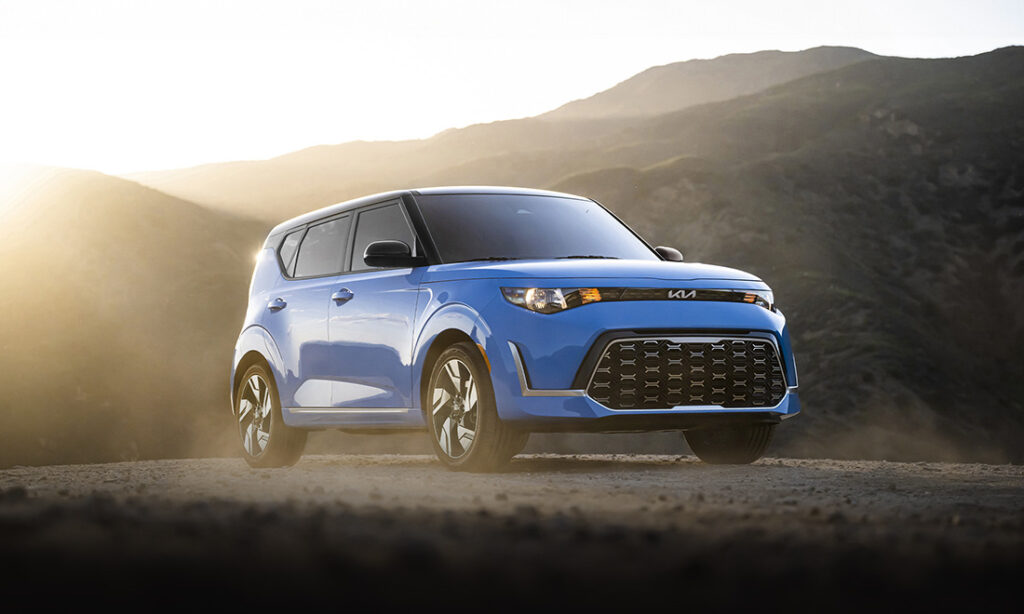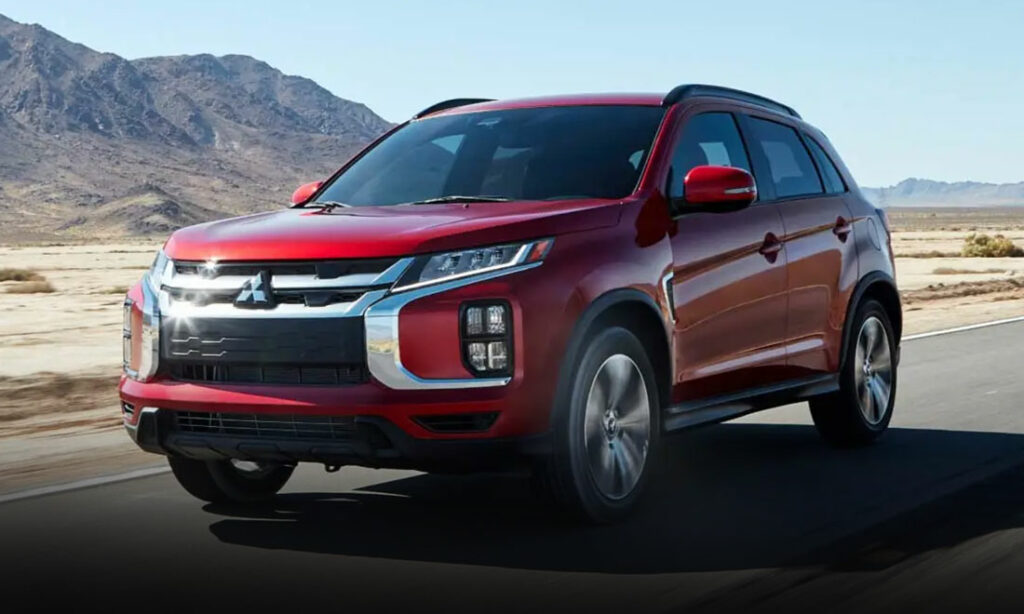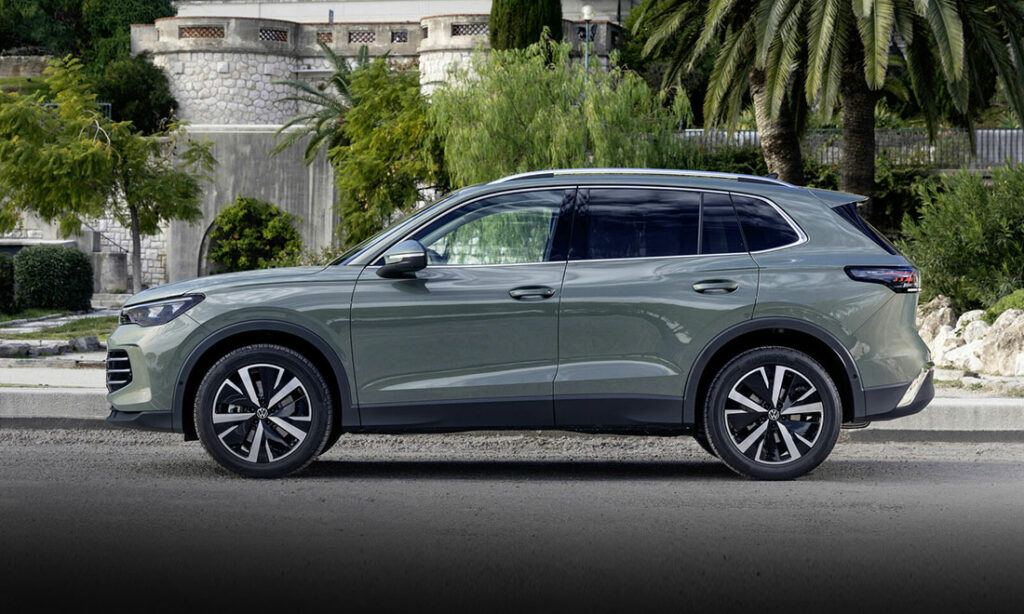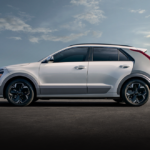Hyundai Sonata Through the Years
The Hyundai Sonata has a 35+ year history. Take a look at how styling, technology, and efficiency have changed with each generation through the years.
The Sonata Success Story
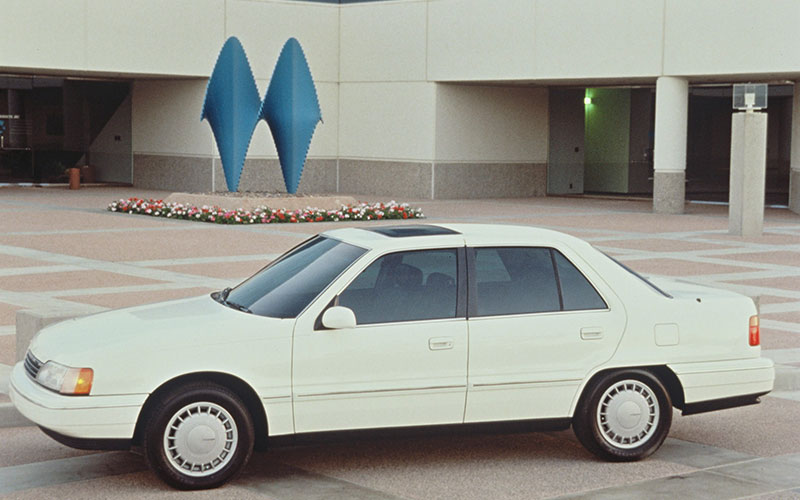
When the Hyundai Sonata debuted in South Korea in 1985, nobody could have predicted that this rebranded sedan would end up playing a vital role in Hyundai‘s growth overseas. By the time the Sonata turned 30 in 2015, more than 7 million units were sold worldwide. It continued to evolve through the years, meeting the demands of consumers well enough to lead sales in 2019 among its midsize competitors.
The Hyundai Elantra, Santa Fe, Tucson, and Accent are all some of Hyundai’s most popular vehicles, but the Sonata is still in the mix. Take a look below to see how the styling, technology, price, gas mileage, and components have changed over the 35 years and eight generations of the Hyundai Sonata. While weighing the decision about which one to buy, be sure to look at New vs. Used: Hyundai Sonata, where we look at recent models to determine the best deal for your money.
First Generation (1986-1988)
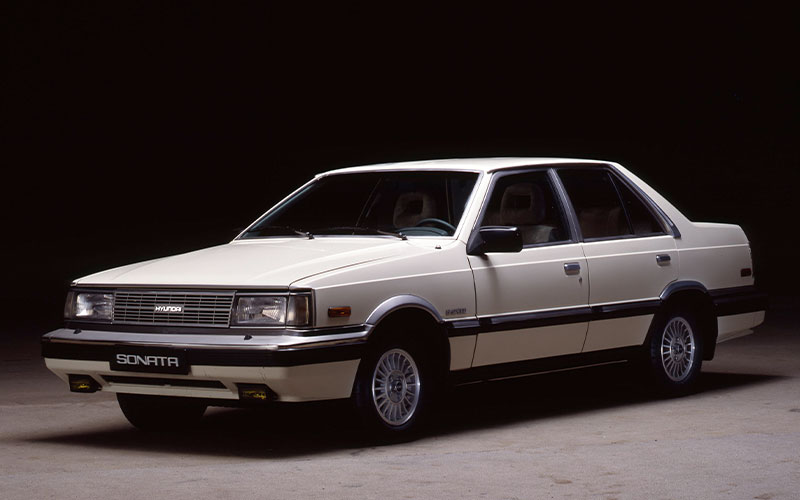
1991 Hyundai Sonata – hyundainews.com | Shop Hyundai Sonata on Carsforsale.com
- In an effort to compete with the Daewoo Royale series, Hyundai introduced the Sonata as a rebranded Hyundai Stellar with a facelift and engine upgrade.
- The Hyundai Stellar was, itself, a rebadged Ford Cortina that Hyundai was making under license, so the Hyundai Sonata essentially started as a twice-rebadged sedan.
- Even though it shared similarities with the Hyundai Stellar, the first-generation Sonata was one of Hyundai’s first models designed exclusively by Hyundai’s in-house design team.
- A four-cylinder Mitsubishi engine was used for the initial Sonata models, available in 1.6-liter, 1.8-liter, or 2.0-liter options.
- The first-generation 1985 Hyundai Sonata was a rear-wheel drive (RWD) vehicle.
- Sales in South Korea surpassed 1,000,000 units, a first for a single model line in the country.
Second Generation (1989-1994)
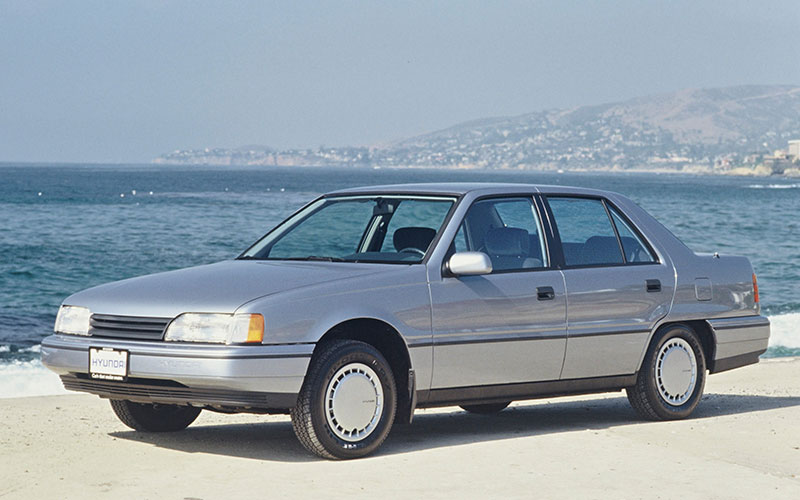
- After first-generation success in South Korea, the second-generation 1989 Hyundai Sonata was exported all over the world.
- This Sonata used Mitsubishi engineering for the platform and engines.
- The 1990 Hyundai Sonata GLS received a V6 engine.
- This Sonata was front-wheel drive (FWD) instead of RWD.
- The design was more aerodynamic than the first-generation Sonata.
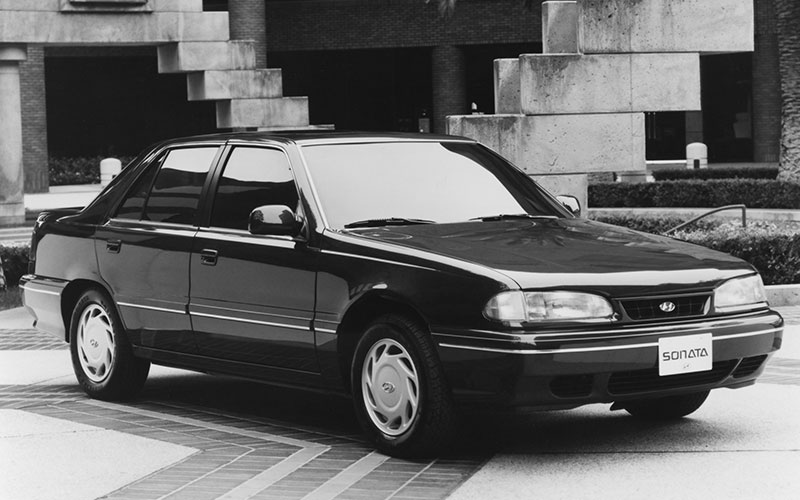
- It was also updated with a new grille and newly available leather upholstery.
- Child-proof rear door locks were added to the 1991 model.
- Four model years into the second generation, the 1992 Sonata received a facelift that included an updated Hyundai logo.
- Outside of small revisions, like new wheel covers, the 1993 and 1994 models weren’t updated.
Third Generation (1995-1998)
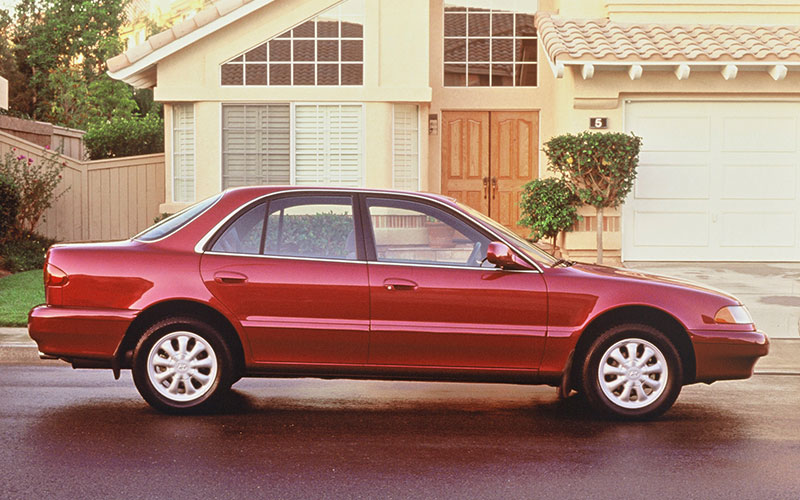
- A brand-new 1995 Sonata kicked off the third generation of the vehicle in mid-1994.
- GL and GLS trims featured Mitsubishi-based engine options that ranged from 137 to 142 horsepower.
- Other changes that were new with the 1995 model included standard air conditioning, a cassette player, and dual airbags.
- The 1995 Sonata gained a couple of inches of wheelbase as well.
- Starting in 1996, anti-lock braking system (ABs) became available in the GLS trim.
- Seat fabric was upgraded in the base and GL trims.
- Hyundai added wood trimming throughout the cabin, including on dash, center console, and center stack by the time the 1997 Sonata was released.
- The 1.8-liter engine, making 98 horsepower, was dropped from the lineup.
Fourth Generation (1999-2005)
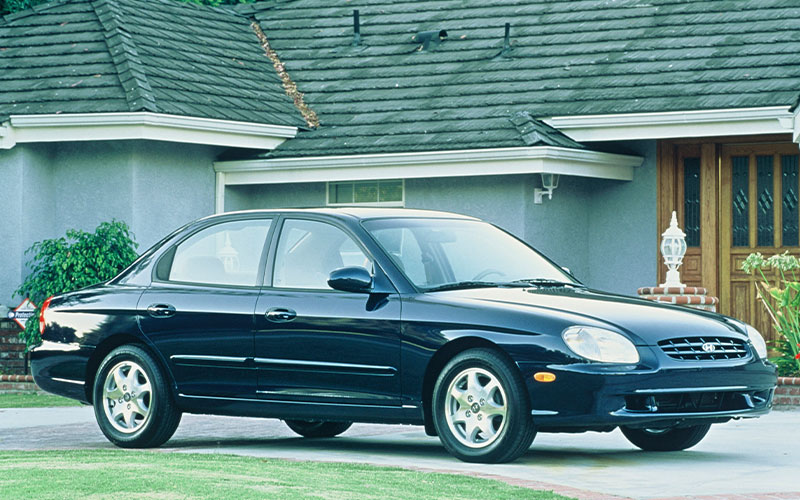
- The 1999 Hyundai Sonata was the best-selling vehicle in South Korea from February 1999 to August 2000.
- A 2.4-liter four-cylinder engine was standard, and a 2.5-liter V6 was optional.
- A five-speed manual transmission was offered in all Sonata models, but a four-speed automatic transmission was available.
- The Hyundai Sonata can’t escape rebadging, but this time it was the Sonata that was rebadged as the Kia Optima.
- Both were sedans made under the Hyundai-Kia umbrella in 2000 with only slight exterior styling differences between the two cars.
- The 2001 Sonata was a midsize sedan that was competing with the likes of the Honda Accord, Toyota Camry, Chevrolet Malibu.
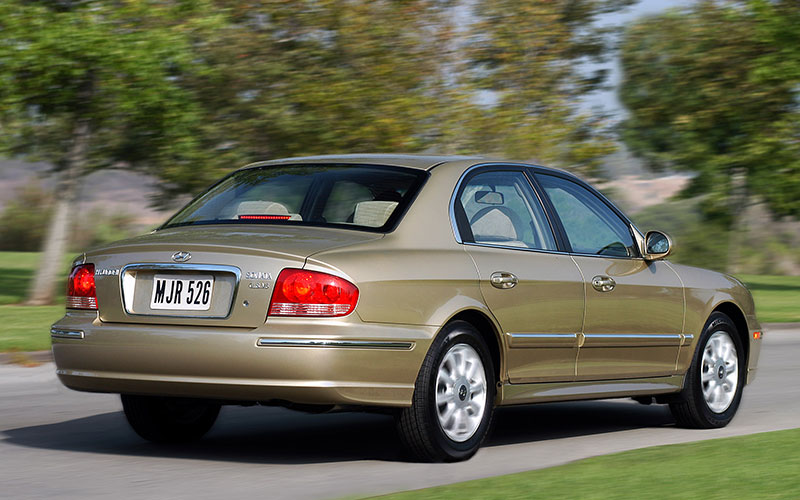
- More than 62,000 Sonatas were sold in the U.S. in 2001.
- Additional styling changes were made for the release of the 2002 Sonata.
- The grille and front headlights were two of the more recognizable changes.
- The 2002 Sonata also featured a larger, optional 2.7-liter V6 engine, making 170 horsepower.
- Hyundai was leading the industry at the time with a 100,000-mile powertrain warranty.
- Added safety features included dual front and side-impact airbags and a shoulder harness for rear passengers.
- The 2003 model received a few minor interior updates like standard carpeted floor mats and manual shift indicators, but nothing of note.
- When the 2004 Hyundai Sonata was released, the base trim cost under $17,000.
- Three trim levels of the 2004 Hyundai Sonata were the base model, GLS, and LX.
Fifth Generation (2006-2010)
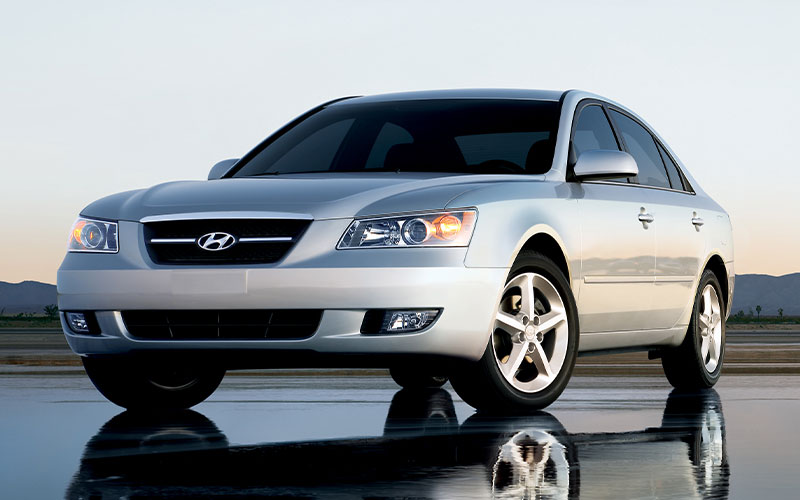
- The 2006 Hyundai Sonata was announced at the North American International Auto Show.
- The fifth-generation vehicle was designed in Michigan and California, and was manufactured at Hyundai’s new plant in Montgomery, Alabama.
- Two engines were offered with the 2006 Sonata: an all-new 2.4-liter Theta DOHC inline four-cylinder making 162 horsepower, or a new 3.3-liter V6 producing 237 horsepower.
- Though the 2006 Sonata didn’t increase in body size, it was designated a “large car” by the U.S. government because of its overall interior volume.
- Six airbags were included in every 2006 Sonata.
- Hyundai announced a change in the trims for 2007 Sonata models, including a new sporty SE trim.
- All 2007 Hyundai Sonatas were given a tire-pressure monitor and XM radio.
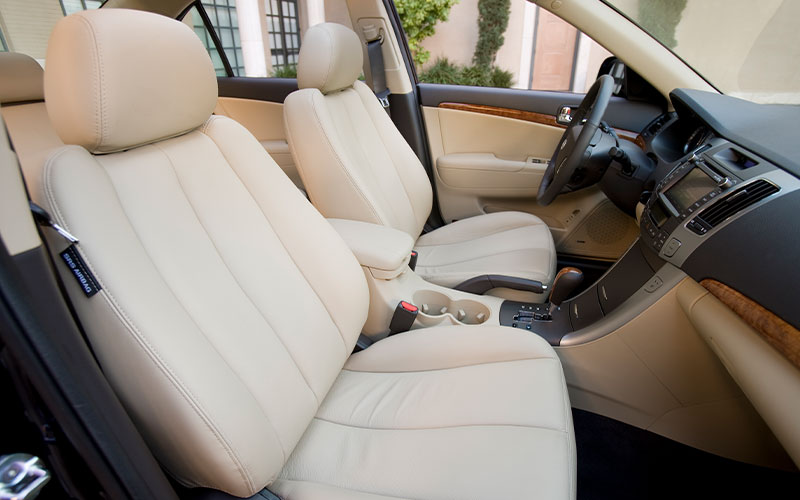
- The 2008 Sonata SE improved comfort and looks with performance tires and a rear spoiler.
- Hyundai unveiled plans for a Hyundai Sonata Hybrid at the 2008 Los Angeles Auto Show.
- An updated, more upscale interior was the biggest change for the 2009 model.
Heated front seats were added to the 2009 Hyundai Sonata Limited trim. - Dual-zone automatic climate control, an auxiliary audio jack, and an optional navigation system were additional interior updates.
- The GLS trim was only available with a four-cylinder engine in the 2010 Hyundai Sonata.
Sixth Generation (2011-2014)
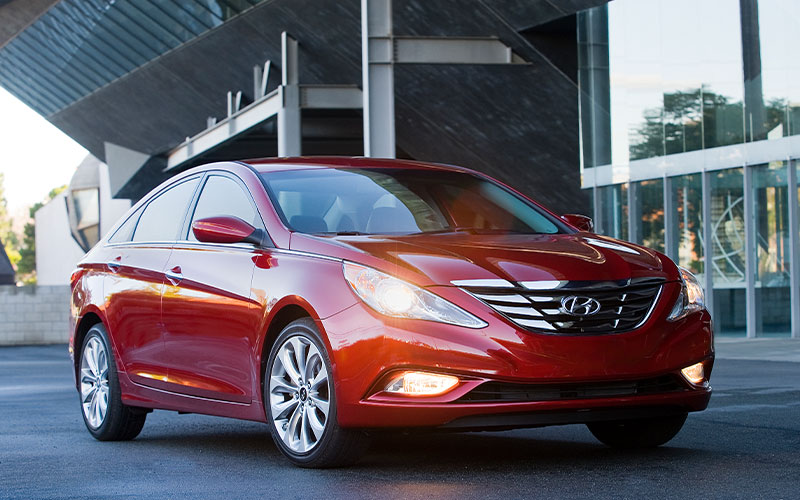
- The completely redesigned 2011 Hyundai Sonata had a MSRP of $19,195.
- 2011 Sonata trim levels included the GLS, SE, and Limited.
- The Sonata Hybrid was introduced in the 2011 model year.
- Hyundai boasted about the Sonata’s best-in-class 35 mpg fuel economy on the highway, making it the most fuel-efficient car maker in the United States.
- New engine options were the 2.4-liter inline-4 or a 2.0-liter turbo.
- Hyundai made their Blue Link telematics system a standard offering starting with the 2012 Hyundai Sonata.
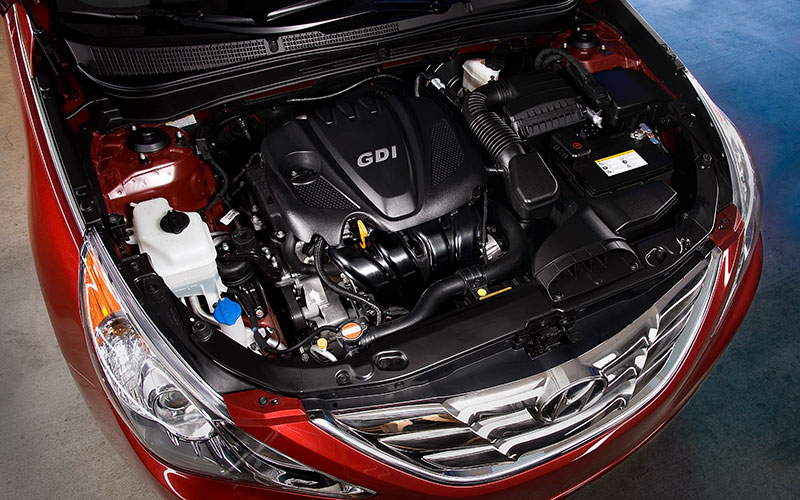
- Recalibrated 2012 Hyundai Sonata engines increased city mileage to 24 mpg and overall fuel economy to 28 mpg.
- On July 29, 2011, a limited edition 2012 2.0 turbo Sonata became the one-millionth model built at the Montgomery, Alabama Hyundai factory.
- Hyundai eliminated the option of a manual transmission on the 2013 Sonata GLS.
- Instead, Hyundai made a six-speed automatic transmission available across the 2013 lineup.
- Multiple features were added to the 2014 model, including optional blind-spot monitoring, LED taillights, a ventilated driver’s seat, steering modes, and an available navigation system.
Seventh Generation (2015-2019)
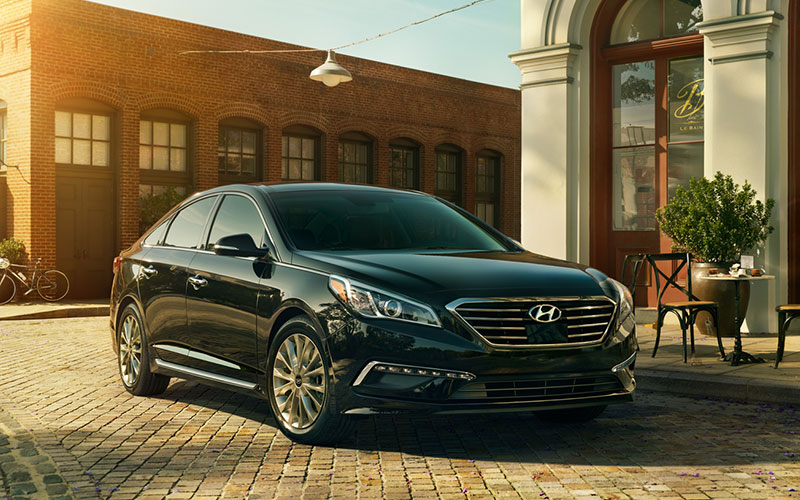
- To start the seventh generation of the Sonata, Hyundai increased the size of the Sonata to 191.1 inches long, an increase of 1.3 inches from the sixth-generation Sonata.
- The cabin increased by 1.2 inches as well.
- The 2015 Hyundai Sonata was available in six different trims.
- The new Eco trim came with a 1.6-liter turbo four-cylinder.
- A seven-inch touchscreen was a standard feature in the 2016 Hyundai Sonata.
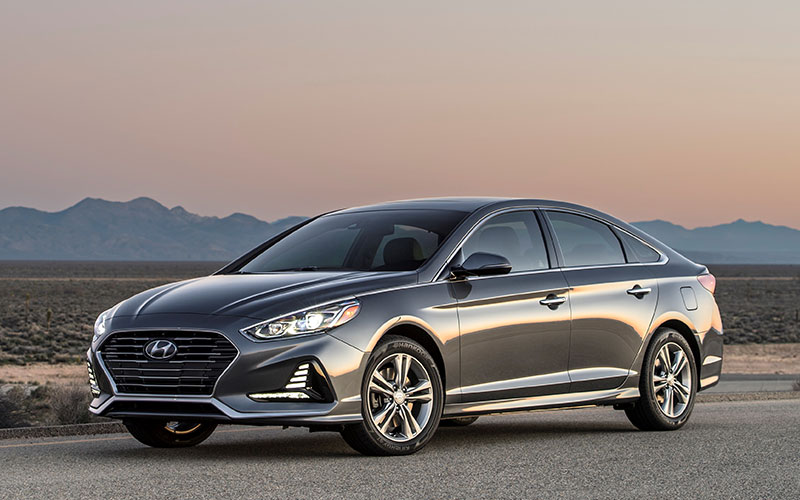
- Android Auto and Apple CarPlay became available with the release of the 2016 Sonata.
- Hyundai added automatic headlights and a rearview camera to the list of standard 2016 Sonata features, too.
- The 2018 model was given an updated look inside and out.
- It received a cascading grille in front and slimmer taillights in the back.
- A Qi wireless charging pad was one of a few interior features added to the 2018 Hyundai Sonata.
- There were no notable changes in the 2019 Hyundai Sonata.
Eighth Generation (2020-Current)
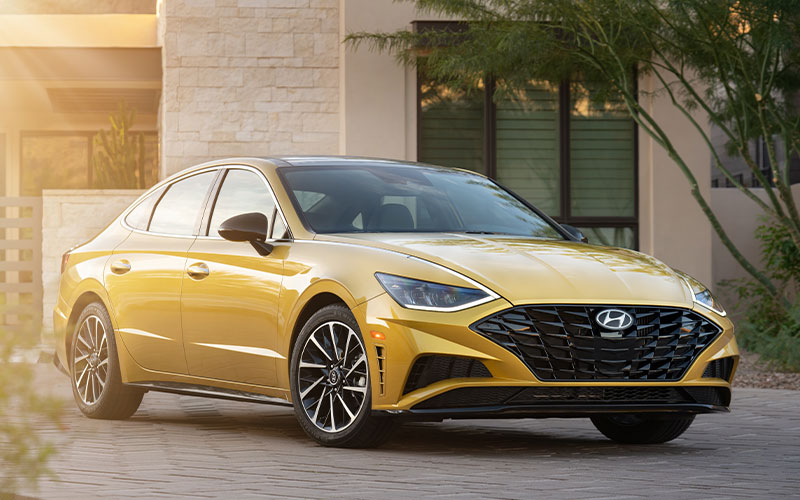
- A new Smartstream 2.5-liter engine in the 2020 Sonata makes 191 horsepower, up from 185 horsepower in the 2019 model.
- Another increase is the eight-speed automatic transmission, upgraded from 2019’s six-speed transmission.
- The 2020 Hyundai Sonata achieves a combined 32 mpg.
- On the exterior, the 2020 model looks even sharper than before, with a low stance and
- New standard features on the 2020 Sonata include lane-keeping assist, lane follow assist, driver attention warning, forward-collision avoidance, and smart cruise control with stop and go.
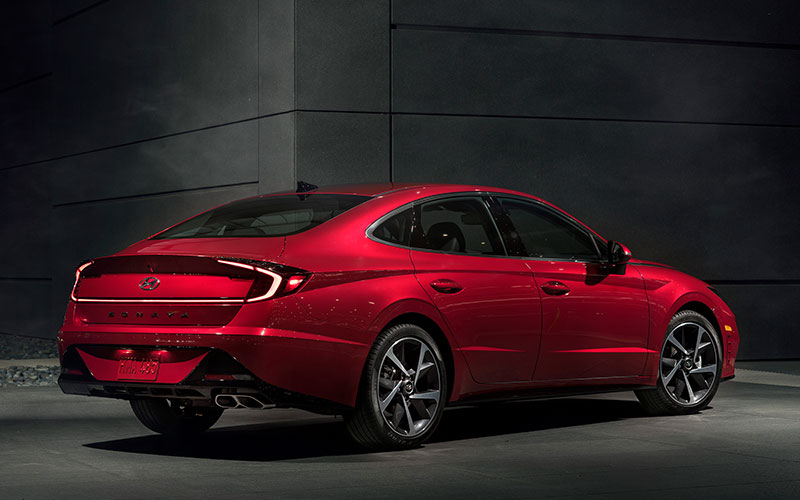
- The touchscreen in the 2020 Sonata increased to eight inches, one inch larger than previous models.
- A new trim joins the 2021 lineup: the N Line.
- The 2021 N Line has a new 2.5-liter four-cylinder turbo that makes 290 horsepower and 311 lb-ft of torque.
- To find out how the 2021 Sonata stacks up against the competition, be sure to look at our head-to-head comparison of the 2021 Hyundai Sonata vs Toyota Camry.
- There aren’t any major updates for the 2022 model.
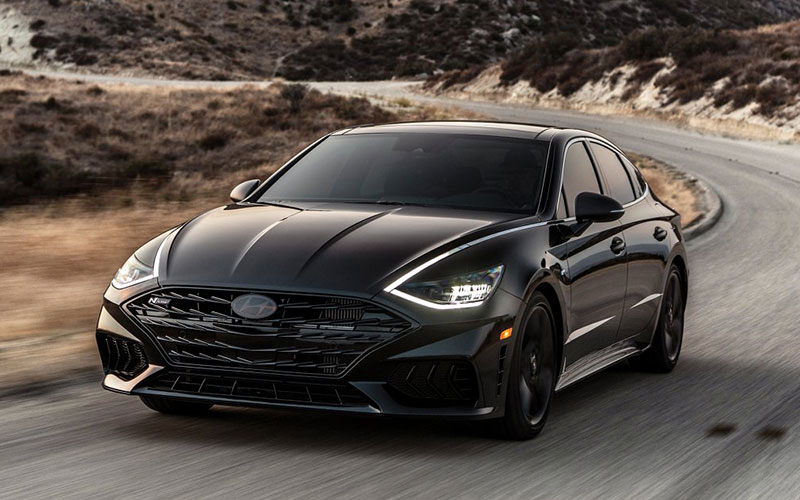
2022 Hyundai Sonata – hyundaiusa.com | Shop Hyundai Sonata on Carsforsale.com
- The SEL Plus trim has a few new standard features: a panoramic sunroof, an upgraded Bose audio system with 12 speakers, and Hyundai’s navigation system.
- The 2022 Limited trim added voice recognition as a standard feature.
- Glowing Yellow was dropped as a paint color on the SEL Plus and N Line trims.
- The 2022 Sonata base trim has a starting MSRP of $24,500.
- Up to 290 horsepower can be achieved with a turbo 2.5-liter four-cylinder engine.
- You can read about the features of every trim in our 2022 Hyundai Sonata review.


